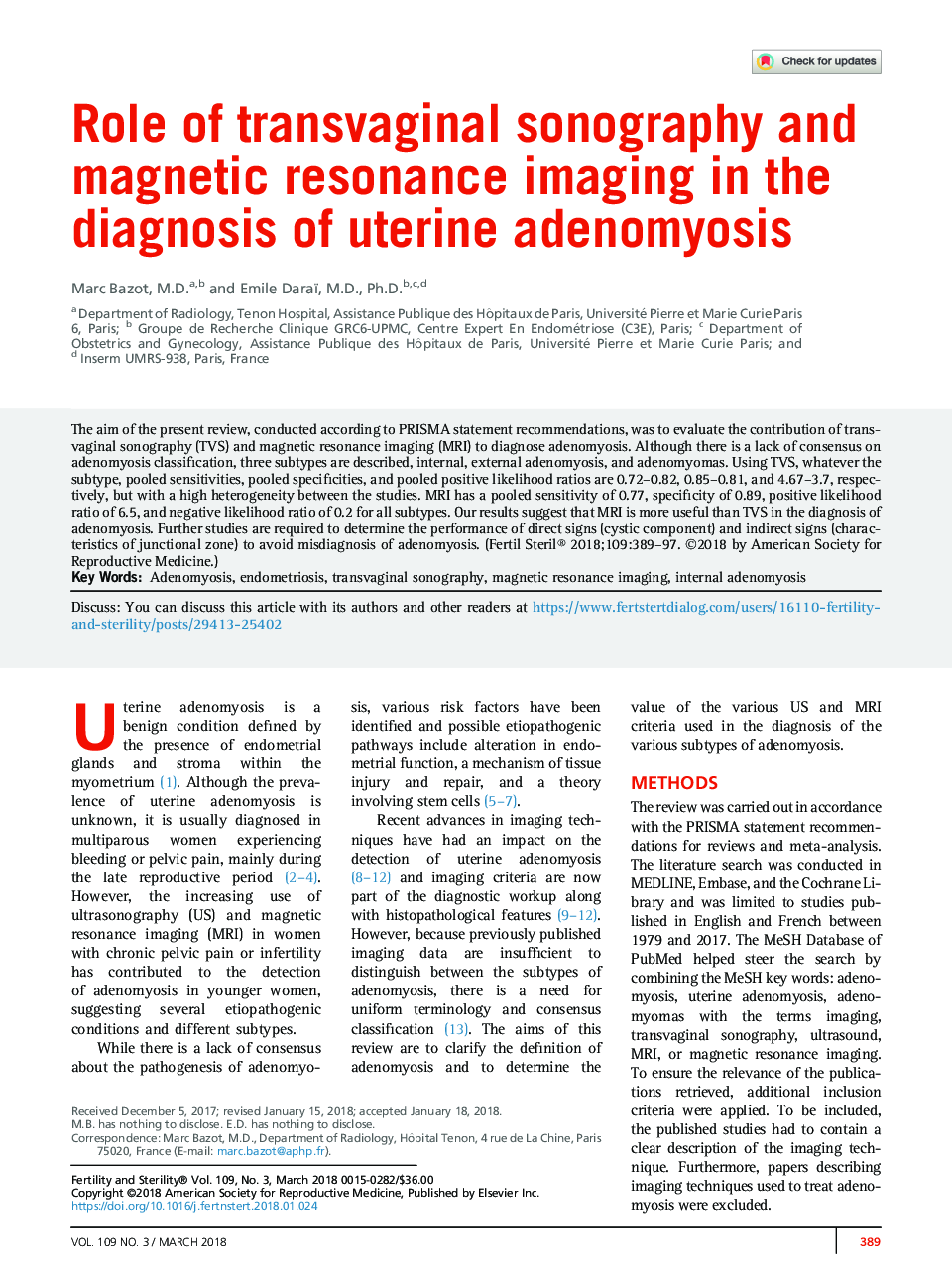| Article ID | Journal | Published Year | Pages | File Type |
|---|---|---|---|---|
| 8779662 | Fertility and Sterility | 2018 | 9 Pages |
Abstract
The aim of the present review, conducted according to PRISMA statement recommendations, was to evaluate the contribution of transvaginal sonography (TVS) and magnetic resonance imaging (MRI) to diagnose adenomyosis. Although there is a lack of consensus on adenomyosis classification, three subtypes are described, internal, external adenomyosis, and adenomyomas. Using TVS, whatever the subtype, pooled sensitivities, pooled specificities, and pooled positive likelihood ratios are 0.72-0.82, 0.85-0.81, and 4.67-3.7, respectively, but with a high heterogeneity between the studies. MRI has a pooled sensitivity of 0.77, specificity of 0.89, positive likelihood ratio of 6.5, and negative likelihood ratio of 0.2 for all subtypes. Our results suggest that MRI is more useful than TVS in the diagnosis of adenomyosis. Further studies are required to determine the performance of direct signs (cystic component) and indirect signs (characteristics of junctional zone) to avoid misdiagnosis of adenomyosis.
Related Topics
Health Sciences
Medicine and Dentistry
Obstetrics, Gynecology and Women's Health
Authors
Marc M.D., Emile M.D., Ph.D.,
